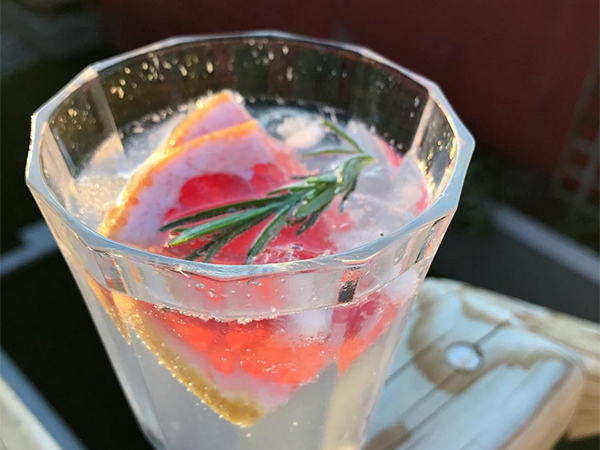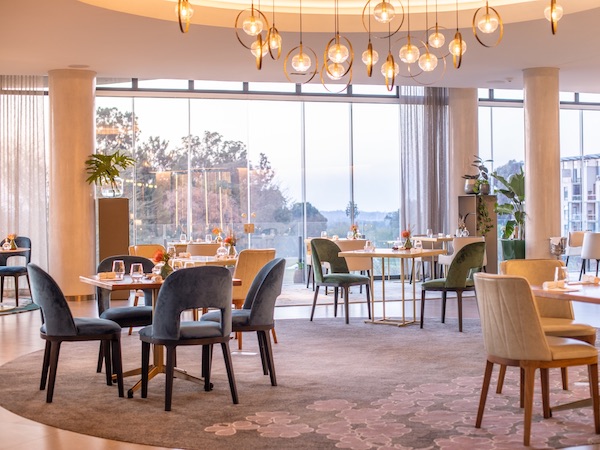News
8 hot food trends for 2018
Tuesday, January 9th, 2018American conglomerate Whole Foods lists floral flavours, functional mushrooms, traceability, tacos and everything Middle Eastern among its list of food trend predictions for 2018. But will South Africa see the same trajectory? Kate Liquorish chats to those in the know for their hot tips for the year ahead on the SA food scene.
1. Ramen and sea greens
Eat Out editor Abigail Donnelly sees ramen becoming ever more popular and accessible. She suggests supermarket shelves will soon have whole sections dedicated to Japanese cooking and ramen, with ‘sea vegetables’ such as samphire, seaweed and seaweed products becoming readily available.
2. More simple, accessible fine dining
Abigail also suggests top chefs will look to open restaurants that focus on simple fare that’s more accessible and cost-effective. The food will still be in the spirit of fine-dining using top quality ingredients, but without the frippery: starched white tablecloths, silver cutlery etc. These spaces will act as a playground for innovation.
Luke Dale-Roberts, chef at 2017 Restaurant of the Year The Test Kitchen, number 10 restaurant The Pot Luck Club, and nominee Luke Dale-Roberts X The Saxon, also predicts than an increasing number of people will be looking for à la carte-style dining experiences. “While tasting menus will always have a place in fine dining, there will be a move towards upper-echelon restaurants offering à la carte so that diners can opt for a simple three courses and a bottle of wine.”
3. Middle Eastern everything
In line with USA trends, Abigail also thinks we’re about to see a lot more Middle Eastern everything in South Africa: Tahini will be the new peanut butter and floral flavours like rose will be making a comeback in both sweet and savoury dishes.
Steve Steinfeld, of The Joburg Foodie, agrees: “Thanks in no small part to the likes of Yotam Ottolenghi, Miss Ada in New York and London’s of-the-moment The Palomar, a modern take on Jerusalem-inspired cuisine has grown worldwide in both visibility and popularity. One should expect full and fragrant flavours of za’atar and zhoug, contemporary twists on chickpea classics (hummus and falafel) scooped up with golden flatbreads, and perhaps even a fine-dining take on the Israeli breakfast classic, shakshuka.”
4. Lighter dishes and lower alcohol
Chef Chantel Dartnall of Restaurant Mosaic, number two in the 2017 Top 10, believes that the low-alcohol movement is not just a trend, but a conscious movement that is here to stay, which will change consumers’ wine choices too. “The trend in fine dining is also towards lighter types of food as our guests become more health-conscious and mindful of where ingredients come from. These lighter dishes are asking for elegant, food-friendly wines – grenache, cabernet franc and even cinsault are becoming more popular.”
5. Provenance and root-to-leaf cooking
Chef James Diack of Coobs, The National Eatery and Speakeasy, The Federal and Il Contadino in Johannesburg, says provenance is still a big trend – and it’s growing. “More and more people care about traceability. Customers want to know if their grass-fed steak is 100% grass-fed or finished on 20% corn. In this light, people need to make sure that what they’re being told is the truth: are the eggs genuinely free-range, and is the chicken totally organic?” James says that for 2018, the concept of farm-to-fork and nose-to-tail is going even further: root-to-leaf. Chefs are making sure they’re using the entire plant. “For example, a carrot is traditionally used for purées, soups or basic glazed carrots. Now I am taking the tops and using them either in a grommet, a pesto, or as a garnish, thus making use of the full plant.”
6. Saving water
Chef Luke Dale-Roberts is seeing more conscientiousness around saving water, especially in drought-stricken areas like Cape Town. “For obvious reasons, 2018 is going to see the food industry coming up with dynamic ways to save water; it’s vital that everyone takes serious measures. Among other things, [at my restaurants] we’re pouring all of our blanching and ice bucket water into wheelie bins and then using that for cleaning and mopping the floors.”
7. More bubbly and unwooded chardonnays
Miguel Chan, group sommelier of Tsogo Sun, predicts more bubbles on the cards for 2018. “There’s an insatiable thirst amongst the local market for anything bubbly, be it Champagne, MCC, Prosecco or well-made, carbonated sparkling wines. Consumers don’t really differentiate between methods of production, as long as it’s fruity and fizzy. We’ve seen the on-going growth of demi sec as a style; the slight increase in sugar is making the sparkling wine category really dynamic, and I predict this will continue on well into 2018.”
Then, as far as white wine is concerned, he is seeing top-end unwooded chardonnays making a comeback. “One of the most significant reasons for this would be producers going away from oak aesthetics and focusing more on freshness and less malo (malolactic fermentation) in their wines, resulting in a vibrant style that’s far more racy and linear compared to previously, when the wines were rather creamy and smoky with soft acidity,” he explains.
8. Rum
Julian Short, head barman at Sin + Tax in Rosebank, tells us that craft cocktails are in and that gin is here to stay, but that rum’s not far behind. “Classic cocktails are going to be seen less and less and ‘craft cocktails’ are going to be big. We’ll see cocktails unique to their establishments,” he says. “Gin is still going to be prevalent in 2018, but rum is going to be the next big thing. Rum and gin are both quite quick to craft; you can make a batch of rum in a week or even a day. We also have the environment and resources to do it: the perfect climate and sugar cane.”
Tell us your predictions – or your hopes for trends to die (burgers on soggy wooden boards, anyone?)– in the comments below.













Shakshouka (Arabic: شكشوكة, also spelled shakshuka, chakchouka) is a dish of eggs poached in a sauce of tomatoes, chili peppers, and onions, often spiced with cumin. Its present egg and vegetable-based form originated in Tunisia. It is popular in the Middle East and North Africa.